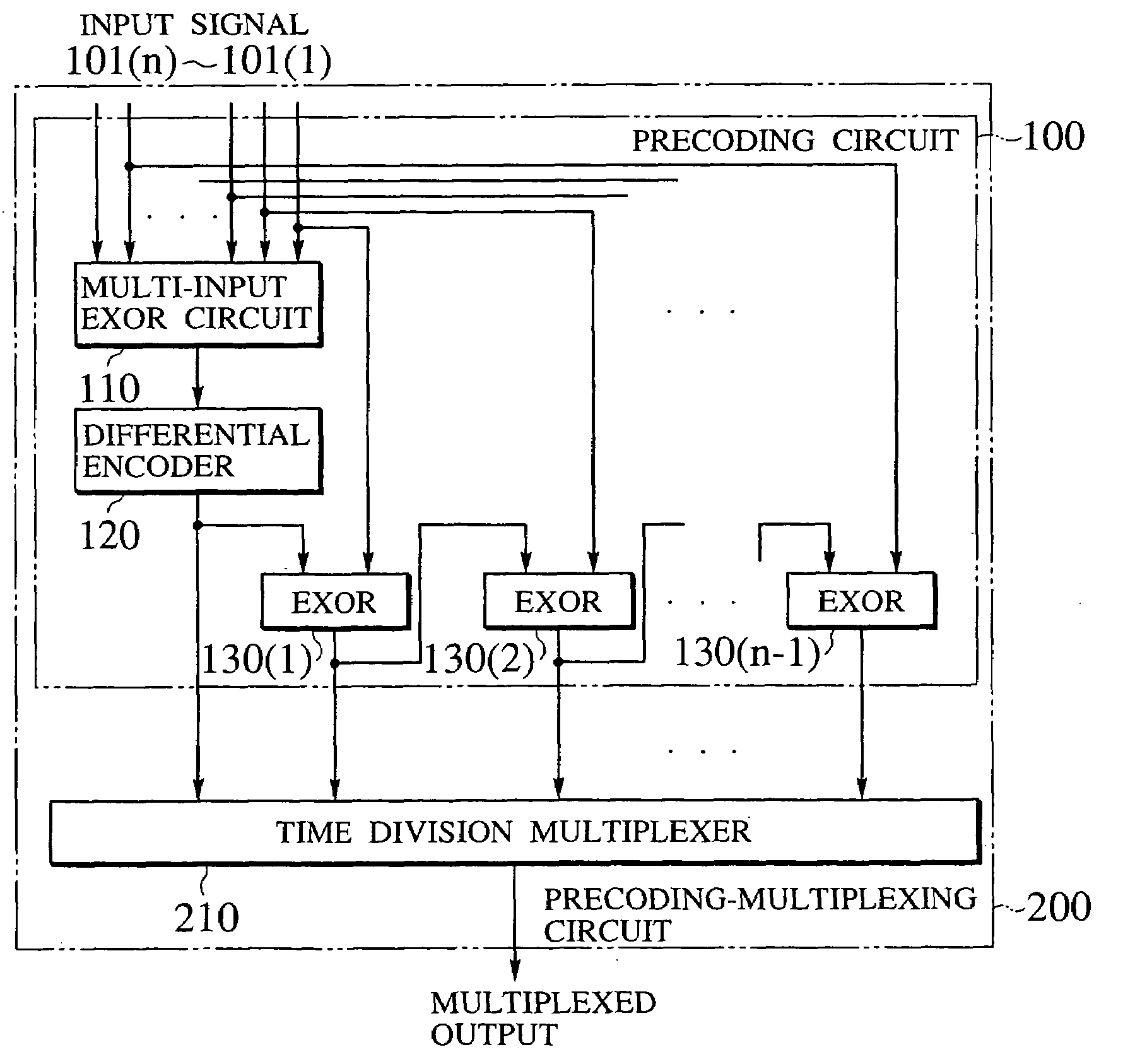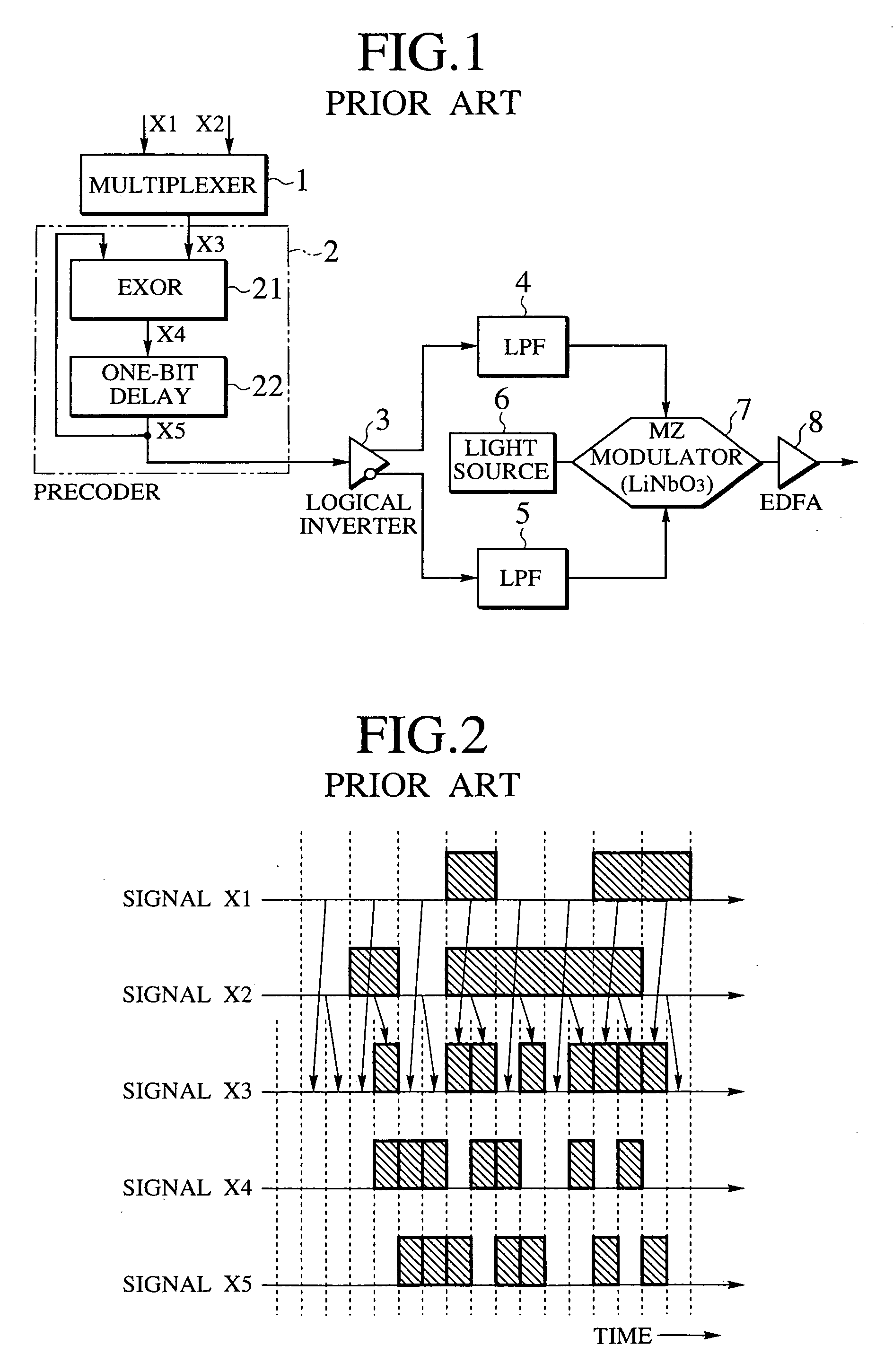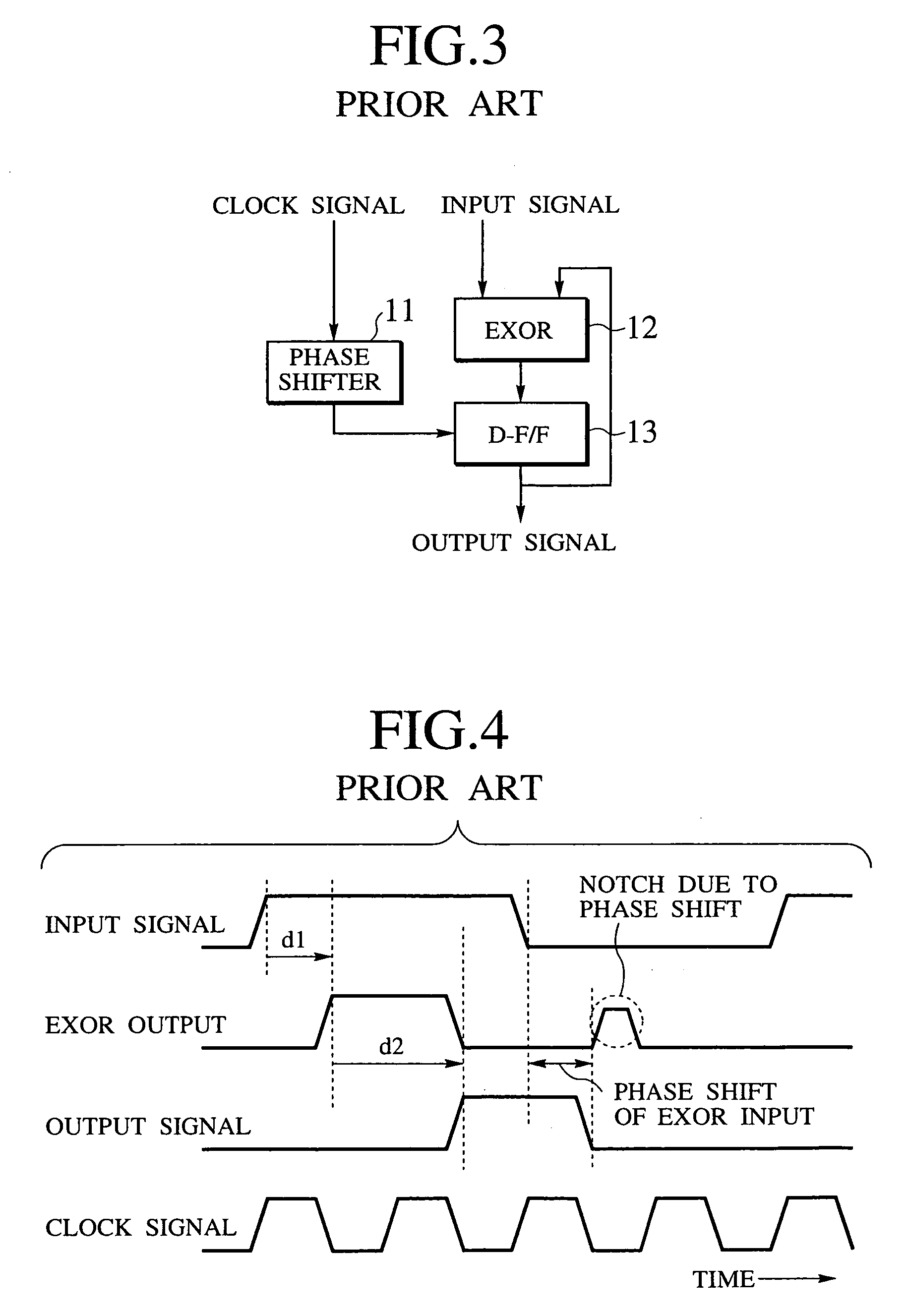Precoding circuit and precoding-mulitplexing circuit for realizing very high transmission rate in optical fiber communication
a transmission rate and optical fiber technology, applied in pulse technique, instruments, baseband system details, etc., can solve the problems of complexed signals that cannot be processed, the delay time required for the feedback to the exor circuit would become longer than one time-slot time, and the realization of one-bit delay is difficult. , to achieve the effect of handling very high transmission rate and simple configuration
- Summary
- Abstract
- Description
- Claims
- Application Information
AI Technical Summary
Benefits of technology
Problems solved by technology
Method used
Image
Examples
first embodiment
[0056]Referring now to FIG. 5 to FIG. 12, a precoding circuit and a precoding-multiplexing circuit according to the present invention will be described in detail.
[0057]FIG. 5 shows a schematic configuration of a precoding-multiplexing circuit in this first embodiment, and FIG. 6 shows a detailed configuration of the precoding-multiplexing circuit of FIG. 5. FIG. 7 shows one exemplary configuration of a multi-input EXOR circuit used in the configuration of FIG. 6, and FIG. 8 shows another exemplary configuration of a multi-input EXOR circuit used in the configuration of FIG. 6.
[0058]FIG. 9 shows a configuration of the precoding-multiplexing circuit of the first embodiment in an exemplary case of the number of multiplexing n=2, and FIG. 10 shows exemplary signals in the precoding-multiplexing circuit of FIG. 9. FIG. 11 shows a configuration of the precoding-multiplexing circuit of the first embodiment in an exemplary case of the number of multiplexing n=4, and FIG. 12 shows exemplary ...
second embodiment
[0098]Referring now to FIG. 13 and FIG. 14, a preceding circuit and a precoding-multiplexing circuit according to the present invention will be described in detail.
[0099]FIG. 13 shows a configuration of the precoding-multiplexing circuit of the second embodiment, and FIG. 14 shows exemplary signals in the precoding-multiplexing circuit of FIG. 13. Note that the delay time of the circuit elements other than half-bit delays 151, 155 and 156 of FIG. 13 is ignored in FIG. 14.
[0100]The input signals 101 to be entered into the precoding-multiplexing circuit 200C shown in FIG. 13 are two parallel binary signals in the bit rate that is ½ of the transmission rate. Namely, two signals before the time division multiplexing are entered as parallel input signals 101(1) and 101(2).
[0101]The precoding-multiplexing circuit 200C of FIG. 13 comprises a preceding circuit 100C and a selector 215. The selector 215 has the same function as the time division multiplexer 210 of the first embodiment.
[0102]A...
third embodiment
[0114]Referring now to FIG. 15 and FIG. 16, a precoding circuit according to the present invention will be described in detail.
[0115]FIG. 15 shows a configuration of the preceding circuit of the third embodiment, and FIG. 16 shows exemplary signals in the precoding circuit of FIG. 15.
[0116]The precoding circuit of FIG. 15 fulfills the same function as the conventional precoder of FIG. 1. However, the precoding circuit of FIG. 15 has a configuration which is devised to shorten the internal delay time.
[0117]In FIG. 15, a D-type flip-flop 160 connected to an output of an EXOR circuit 161 realizes the one bit time delay.
[0118]As shown in FIG. 16, there is a time lag of about one period of the clock signal between the input (EXOR output) and the output (output signal) of the D-type flip-flop 160. When the propagation delay of the circuit becomes unignorable compared with a time-slot of one bit due to the increase of the transmission rate, there is a possibility for a delay time required ...
PUM
 Login to View More
Login to View More Abstract
Description
Claims
Application Information
 Login to View More
Login to View More - R&D
- Intellectual Property
- Life Sciences
- Materials
- Tech Scout
- Unparalleled Data Quality
- Higher Quality Content
- 60% Fewer Hallucinations
Browse by: Latest US Patents, China's latest patents, Technical Efficacy Thesaurus, Application Domain, Technology Topic, Popular Technical Reports.
© 2025 PatSnap. All rights reserved.Legal|Privacy policy|Modern Slavery Act Transparency Statement|Sitemap|About US| Contact US: help@patsnap.com



